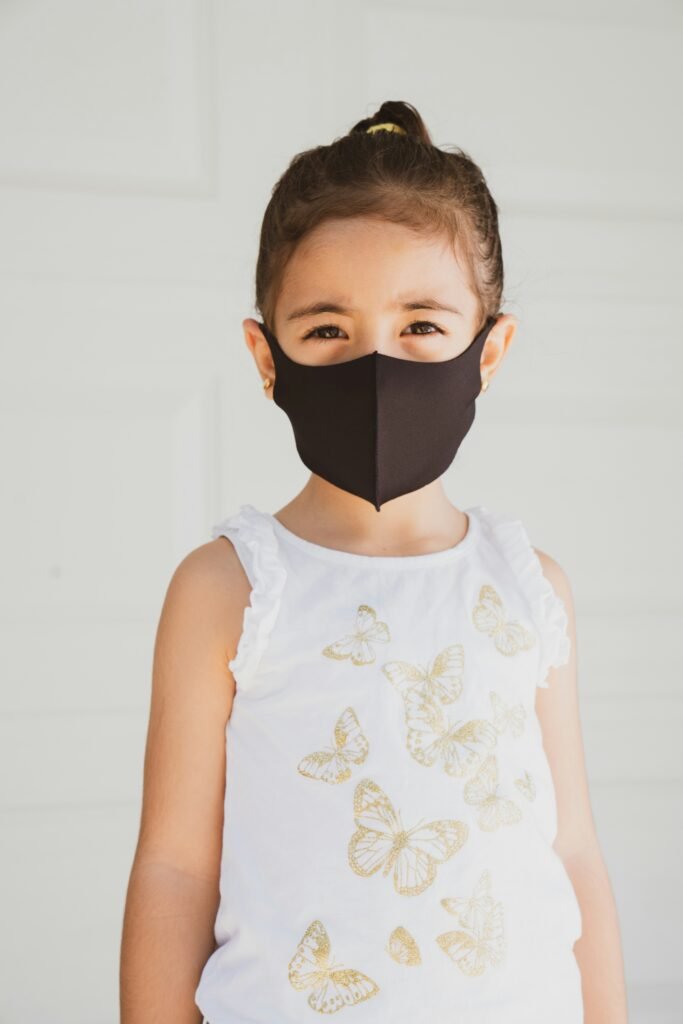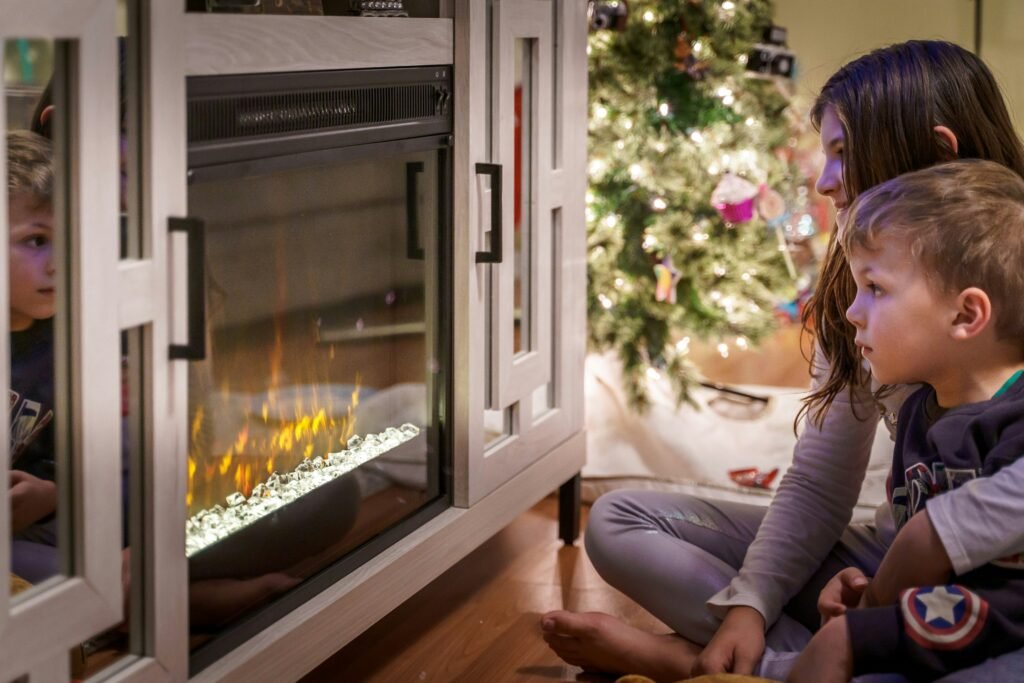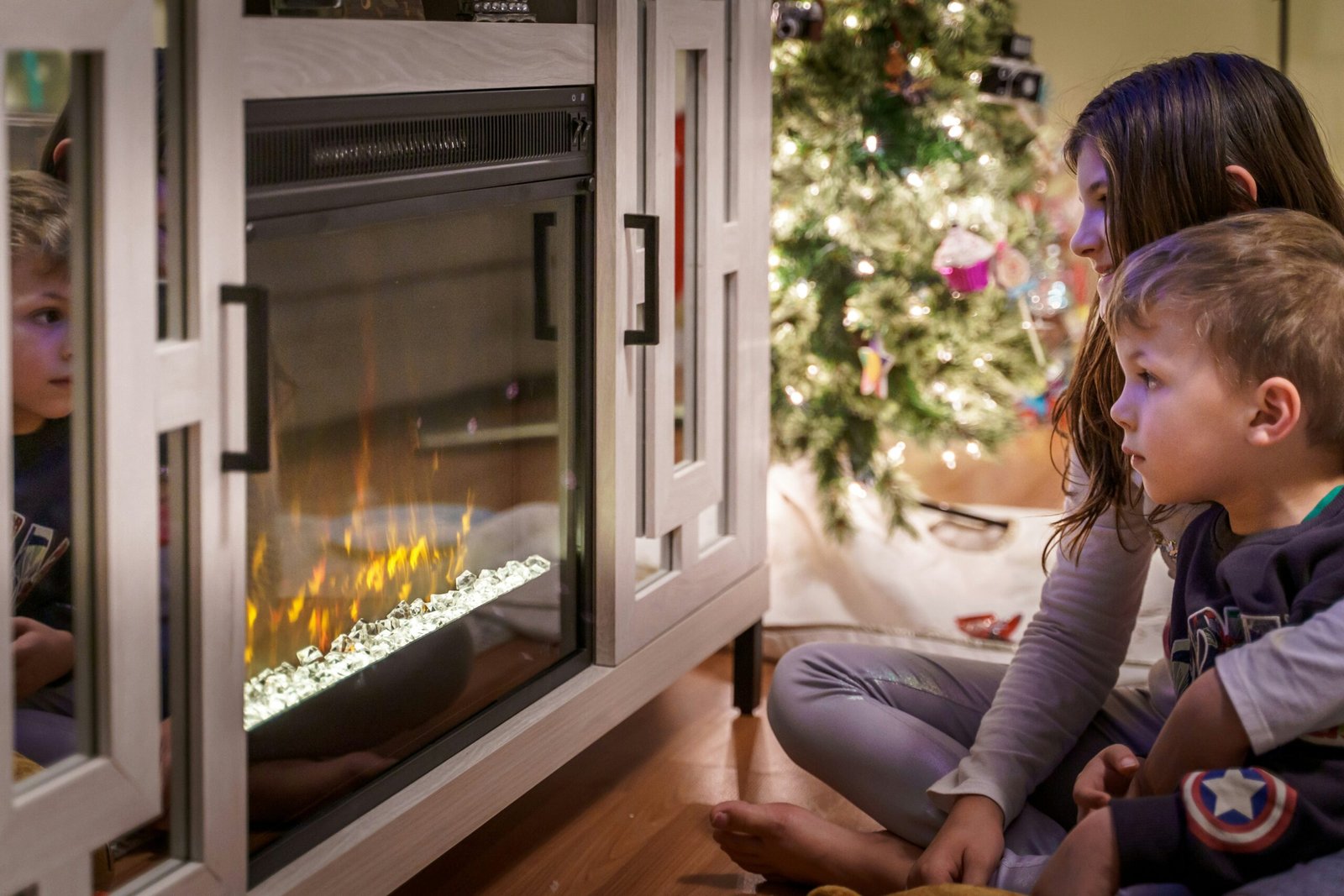Imagine cozy winter nights spent by the crackling fire, with a cup of hot cocoa in hand and a fuzzy blanket wrapped around you. The allure of a fireplace is undeniable, but just as we rely on its warmth and ambiance, we must prioritize safety. In this article, we will explore the essential steps to ensure the year-round safety of your fireplace. With a friendly approach and easy-to-follow tips, you will learn how to prepare your fireplace for every season, granting you peace of mind while enjoying those comforting moments.
Common Fireplace Hazards

This image is property of images.unsplash.com.
Creosote Buildup
One of the most common hazards associated with fireplaces is creosote buildup. Creosote is a highly flammable substance that accumulates on the inside of the chimney when wood in the firebox is not burned completely. Over time, this buildup can become thick and cause chimney fires, leading to property damage and potential harm to you and your loved ones.
Faulty Chimney
Another common fireplace hazard is a faulty chimney. A chimney consists of various components, including the flue liner, masonry, and chimney crown. Any damage or deterioration in these areas can result in poor ventilation, posing a risk of carbon monoxide poisoning, as well as the escape of harmful gases and smoke into your living space.
Cracked Firebox
A cracked firebox is also a significant fireplace hazard. The firebox is the area where the fire is contained. If it develops cracks or other structural issues, it can compromise the safety and functionality of the entire fireplace system. These cracks can allow heat and sparks to escape, potentially causing a fire hazard.
Damaged Chimney Cap
A damaged or missing chimney cap is another hazard to watch out for. The chimney cap serves as a protective cover for the top of the chimney, preventing debris, animals, and rainwater from entering the chimney. When the cap is damaged or absent, it can lead to blockages, increased moisture inside the chimney, and even nesting of animals. These issues can lead to poor ventilation, mold growth, and chimney fires.
Proper Fireplace Maintenance
Regular Chimney Inspections
To ensure the safety and efficiency of your fireplace, it is crucial to schedule regular chimney inspections. A certified chimney professional can thoroughly examine the chimney system, including the flue liner, chimney crown, and other components, to identify any issues or hazards. Regular inspections can help detect problems early on, preventing costly repairs and ensuring the fireplace is in optimal condition.
Annual Chimney Sweep
Along with inspections, an annual chimney sweep is essential to remove any creosote buildup and debris from the chimney. This process involves using specialized brushes and tools to clean the flue, firebox, and chimney liner. By regularly sweeping the chimney, you can minimize the risk of chimney fires and maintain proper ventilation for your fireplace.
Cleaning the Firebox
Regularly cleaning the firebox is another crucial aspect of fireplace maintenance. After each use, it is essential to remove ash, debris, and unburned wood. This not only improves the aesthetics of the fireplace but also prevents the buildup of flammable materials that can increase the risk of a fire. Use a shovel or vacuum specifically designed for ash removal to ensure safe cleaning.
Checking Chimney Cap and Crown
Inspecting and maintaining the chimney cap and crown is also a vital part of fireplace maintenance. Regularly check for any damage, such as cracks or missing parts, and replace or repair them promptly. Additionally, ensure the cap is securely in place to prevent blockages and unwanted entry of animals or debris.
Ensuring Adequate Ventilation
Opening the Damper
To ensure proper ventilation, it is essential to open the damper before lighting a fire. The damper controls the airflow in the chimney and should be fully open to allow smoke and gases to escape efficiently. Once the fire has completely burned out, close the damper to prevent drafts and energy loss.
Proper Airflow
In addition to the damper, it is crucial to maintain proper airflow around the fireplace. Avoid blocking air vents or placing furniture or other objects too close to the fireplace. Adequate airflow is necessary for efficient combustion and ventilation, allowing smoke and harmful gases to exit the living space effectively.
Clearing the Chimney Flue
Regularly inspect and clear the chimney flue of any blockages or obstructions, such as animal nests, leaves, or debris. A clogged flue can affect the proper functioning of the fireplace and increase the risk of carbon monoxide buildup. Use a chimney brush or consult a professional chimney sweep to ensure the flue is clear of any harmful obstructions.
Using a Fireplace Screen
Using a fireplace screen is an effective way to ensure proper ventilation while keeping sparks and embers from escaping the firebox. It acts as a barrier between the fire and the surrounding area, reducing the risk of accidental fires. Make sure the screen is secure and properly sized for your fireplace to provide adequate protection.
Fireplace Fuel Safety
Using Seasoned Firewood
Using properly seasoned firewood is essential for safe and efficient fireplace operation. Seasoned firewood has been dried for at least six months, reducing its moisture content and making it easier to ignite and burn. Wet or green wood can create excessive smoke, contribute to creosote buildup, and diminish the heat output of your fire.
Avoiding Liquid Fire Starters
When lighting a fire, avoid using liquid fire starters, such as gasoline or kerosene. These highly flammable substances can cause sudden and uncontrollable ignition, posing a significant safety risk. Instead, use natural fire starters, such as kindling, newspaper, or commercially available fire starter sticks.
Proper Solid Fuel Storage
If you store solid fuels, such as firewood or pellets, it is crucial to do so safely. Keep them in a designated, well-ventilated area away from the fireplace and other heat sources. Store them off the ground on a non-combustible surface and ensure they are protected from moisture to prevent mold growth and maintain their quality.
Gas Fireplace Safety
If you have a gas fireplace, it is important to follow specific safety practices. Regularly inspect and clean the gas burner, ensuring it is free of debris and functioning properly. If you notice any gas odors or suspect a gas leak, immediately turn off the gas supply, open windows for ventilation, and contact a professional for assistance.
Fire Safety Precautions

This image is property of images.unsplash.com.
Keeping Flammable Materials Away
To prevent accidental fires, it is essential to keep flammable materials and objects away from the fireplace. Do not place furniture, curtains, decorations, or any other flammable items near the fireplace. Always maintain a safe distance to minimize the risk of sparks or hot embers igniting these materials.
Using Fire-resistant Rugs
If you have a rug near the fireplace, ensure it is fire-resistant. Fire-resistant rugs are designed to withstand the heat and sparks from the fireplace, reducing the risk of fire. Avoid using regular rugs or carpets, as they can easily catch fire and spread flames.
Install Smoke and Carbon Monoxide Detectors
Installing smoke and carbon monoxide detectors near your fireplace and throughout your home is paramount for early detection and alerting you to potential hazards. Regularly test these detectors to ensure they are functioning correctly and replace batteries as needed. In the event of a fire or carbon monoxide leak, these detectors can save lives by providing timely warnings.
Keeping a Fire Extinguisher Nearby
Having a fire extinguisher readily available is essential for handling small fires and preventing them from escalating. Ensure the fire extinguisher is appropriate for use on both wood and electrical fires, and that it is easily accessible near the fireplace. Familiarize yourself with its proper operation and periodically check its pressure and expiration date.
Safe Fire Practices
Building Proper Fires
When starting a fire, use a proper fire-building technique. Create a small stack of kindling and place it on the grate or firebox floor. Add larger pieces of seasoned firewood on top, leaving enough space for air to circulate. Avoid overloading the firebox, as this can restrict airflow and increase the risk of smoke and gases entering the living space.
Responsibly Extinguishing Fires
To safely extinguish a fire, avoid using water or other liquids that can create steam and spread embers. Instead, allow the fire to burn out naturally or use a metal poker to spread the embers evenly. Once the fire has died down, use a fireplace shovel to remove any remaining ashes and dispose of them in a metal container. Wait at least 24 hours before disposing of the ashes outside, as they can retain enough heat to start a fire.
Proper Ash Removal
Regularly removing ashes from the firebox is crucial for maintaining a safe and efficient fireplace. When cleaning the ashes, wait until they are fully cooled before transferring them to a metal container. Never dispose of ashes in bags, paper containers, or plastic bins, as they can ignite and cause a fire. Store the metal container outside and away from flammable materials until the ashes are completely cool.
Storing Ashes Safely
If you plan to reuse ashes for gardening purposes, store them safely in a well-ventilated area away from combustible materials. Ashes can retain heat for an extended period and should be stored in a metal container with a tight-fitting lid. Keep the container on a non-combustible surface and ensure it is not exposed to water or moisture.
Child and Pet Safety

This image is property of images.unsplash.com.
Installing Fireplace Gates
To protect children and pets from the hazards of an open fireplace, consider installing fireplace gates. These gates act as barriers, preventing access to the hearth and firebox. Ensure the gates are securely anchored to the surrounding walls or fireplace structure and are tall enough to prevent climbing or reaching over them.
Teaching Children Fireplace Safety
Educating children about fireplace safety is crucial to minimize the risk of accidents. Teach them to never touch the fireplace, throw objects into the fire, or play with matches or lighters. Establish clear boundaries and rules regarding the fireplace, and closely supervise children when it is in use.
Supervising Pets Near the Fireplace
Pets are naturally curious and may be attracted to the warmth of the fireplace. To ensure pet safety, always supervise them when they are near the fireplace. Use pet-friendly fireplace accessories, such as gates or screens, to prevent accidental contact with the fire or burning embers. Additionally, keep pets away from any exposed wires or cords around the fireplace.
Using Pet-friendly Fireplace Accessories
There are various pet-friendly fireplace accessories available that can enhance both safety and comfort for your pets. Consider using flame-resistant pet beds or blankets near the fireplace to provide warmth without the risk of ignition. Additionally, pet-friendly fire starters, such as compressed wood pellets, can help avoid the use of potentially hazardous chemicals.
Emergency Preparedness
Creating an Escape Plan
In case of a fire, it is essential to have an emergency escape plan for your home. Designate primary and secondary escape routes and ensure everyone in the household is aware of them. Practice the escape plan regularly, especially with children, to ensure a swift and organized evacuation in case of an emergency.
Practicing Fire Drills
Regularly practicing fire drills is an effective way to ensure that everyone in your household knows how to respond in the event of a fire. Simulate different scenarios and practice evacuating the house safely and quickly. Make sure everyone understands the importance of staying low to avoid smoke inhalation and how to check closed doors for heat before opening them.
Knowing Emergency Numbers
Keep a list of emergency numbers near your phone or in a prominent location visible to all household members. Include the contact information for local fire departments, emergency services, and poison control centers. In the event of a fire or other emergency, knowing whom to call can help in obtaining timely assistance.
Designating a Meeting Point
Establish a designated meeting point outside your home where everyone can gather after safely escaping a fire. This ensures accountability and allows you to quickly determine if anyone is missing. Choose a location that is a safe distance away from the house, such as a neighbor’s house or a specified landmark.
Off-season Fireplace Maintenance
Cleaning the Chimney During Off-season
During the off-season or when not in use, it is still important to maintain your fireplace. Schedule a chimney cleaning even if you haven’t used your fireplace for an extended period. This removes any potential debris or creosote buildup that may have occurred while the fireplace was dormant and ensures a clean system for the next burning season.
Securing the Fireplace Opening
When your fireplace is not in use, it is essential to secure the opening to prevent drafts, animals, or debris from entering. Ensure the damper is closed, and consider using a chimney balloon or cover to create a tight seal. This prevents heat loss, keeps out unwanted elements, and helps maintain the integrity of your fireplace system.
Closing the Damper
Closing the damper during the off-season is another vital step in maintaining your fireplace. This ensures that conditioned air from your home does not escape through the chimney and that outdoor air does not enter your living space. By keeping the damper closed, you can improve energy efficiency and minimize heat loss.
Regular Dusting and Cleaning
Even during the off-season, it is important to regularly dust and clean the fireplace surround, mantel, and other exposed areas. Use a soft cloth or a gentle cleaning solution specifically designed for fireplaces. Regular maintenance helps keep the fireplace looking its best and prevents the buildup of dust and debris.
Professional Help and Inspections
Hiring Certified Chimney Sweeps
When it comes to fireplace maintenance and inspections, it is essential to hire certified chimney sweeps. These professionals have the expertise and knowledge to identify potential hazards, clean the chimney thoroughly, and ensure the safe operation of your fireplace. Choose reputable chimney sweeps who are certified by recognized organizations to ensure quality service.
Consulting Fireplace Professionals
If you have any concerns or questions about your fireplace, do not hesitate to consult a fireplace professional. They can provide expert advice on maintenance, repairs, and upgrades specific to your fireplace system. Whether it’s troubleshooting a malfunctioning damper or discussing the installation of gas logs, their guidance can help ensure the safety and functionality of your fireplace.
Scheduling Annual Inspections
To maintain the safety of your fireplace, it is crucial to schedule annual inspections by a professional. These inspections will assess the overall condition of your fireplace, identify any potential hazards or issues, and recommend necessary repairs or maintenance. Regular inspections help address problems early on, minimizing the risk of accidents or costly repairs down the line.
Seeking Expert Advice
If you are uncertain about any aspect of your fireplace or have concerns about its safety, seek expert advice. Fireplace professionals can provide guidance on topics such as ventilation, fuel selection, or the installation of safety features. Their expertise can help you make informed decisions and ensure the safety of your home and loved ones.
In conclusion, maintaining a safe fireplace requires regular inspections, proper maintenance, and following essential safety precautions. By addressing common hazards, ensuring adequate ventilation, taking precautions with fuel, practicing safe fire practices, prioritizing child and pet safety, and being prepared for emergencies, you can enjoy the warmth and ambiance of a fireplace while keeping your home and loved ones safe. Remember to consult professionals and seek expert advice when needed to ensure the ongoing safety and functionality of your fireplace. Safe seasons and happy fireside moments await!




